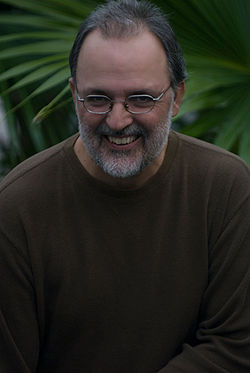Electronic music broadly is a group of music genres that employ electronic musical instruments, circuitry-based music technology and software, or general-purpose electronics in its creation. It includes both music made using electronic and electromechanical means. Pure electronic instruments depended entirely on circuitry-based sound generation, for instance using devices such as an electronic oscillator, theremin, or synthesizer. Electromechanical instruments can have mechanical parts such as strings, hammers, and electric elements including magnetic pickups, power amplifiers and loudspeakers. Such electromechanical devices include the telharmonium, Hammond organ, electric piano and electric guitar.
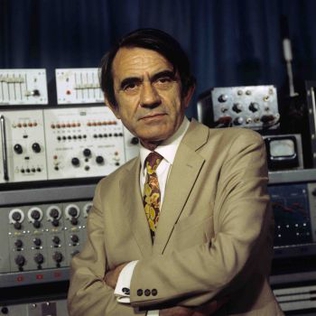
Pierre Henri Marie Schaeffer was a French composer, writer, broadcaster, engineer, musicologist, acoustician and founder of Groupe de Recherche de Musique Concrète (GRMC). His innovative work in both the sciences—particularly communications and acoustics—and the various arts of music, literature and radio presentation after the end of World War II, as well as his anti-nuclear activism and cultural criticism garnered him widespread recognition in his lifetime.
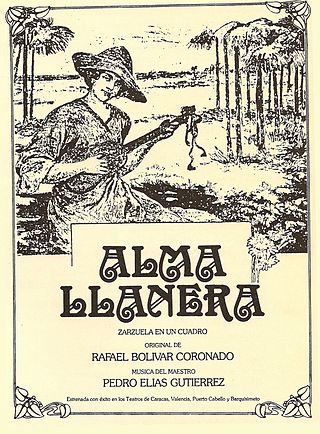
Several styles of the traditional music of Venezuela, such as salsa and merengue, are common to its Caribbean neighbors. Perhaps the most typical Venezuelan music is joropo, a rural form which originated in the llanos, or plains.
Electroacoustic music is a genre of popular and Western art music in which composers use technology to manipulate the timbres of acoustic sounds, sometimes by using audio signal processing, such as reverb or harmonizing, on acoustical instruments. It originated around the middle of the 20th century, following the incorporation of electric sound production into compositional practice. The initial developments in electroacoustic music composition to fixed media during the 20th century are associated with the activities of the Groupe de recherches musicales at the ORTF in Paris, the home of musique concrète, the Studio for Electronic Music in Cologne, where the focus was on the composition of elektronische Musik, and the Columbia-Princeton Electronic Music Center in New York City, where tape music, electronic music, and computer music were all explored. Practical electronic music instruments began to appear in the early 20th century.
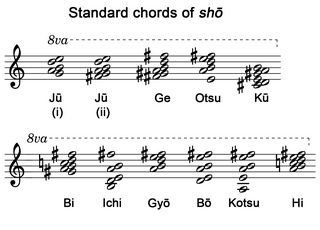
The shō (笙) is a Japanese free reed musical instrument that was introduced from China during the Nara period. It is descended from the Chinese sheng, of the Tang Dynasty era, although the shō tends to be smaller in size than its contemporary sheng relatives. It consists of 17 slender bamboo pipes, each of which is fitted in its base with a metal free reed. Two of the pipes are silent, although research suggests that they were used in some music during the Heian period. It is speculated that even though the pipes are silent, they were kept as part of the instrument to keep the symmetrical shape.

An experimental musical instrument is a musical instrument that modifies or extends an existing instrument or class of instruments, or defines or creates a new class of instrument. Some are created through simple modifications, such as cracked cymbals or metal objects inserted between piano strings in a prepared piano. Some experimental instruments are created from household items like a homemade mute for brass instruments such as bathtub plugs. Other experimental instruments are created from electronic spare parts, or by mixing acoustic instruments with electric components.
Víctor Varela is a Venezuelan-Swedish composer based in Gothenburg. His compositions include works for orchestra, vocal and instrumental chamber music, with electronics and computer devices.
Manuel Rocha Iturbide is a Mexican composer and sound artist.
Live electronic music is a form of music that can include traditional electronic sound-generating devices, modified electric musical instruments, hacked sound generating technologies, and computers. Initially the practice developed in reaction to sound-based composition for fixed media such as musique concrète, electronic music and early computer music. Musical improvisation often plays a large role in the performance of this music. The timbres of various sounds may be transformed extensively using devices such as amplifiers, filters, ring modulators and other forms of circuitry. Real-time generation and manipulation of audio using live coding is now commonplace.
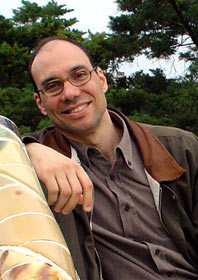
Edson Zampronha is a Brazilian composer dedicated to contemporary experimental music. His works include pieces for orchestra, symphonic band, electroacoustic music, chamber music, sound installations, interactive works and music for films. His music makes an extensive use of rhetoric strategies to create new forms of musical tensions and musical discourses. His research focus on musical signification and it takes semiotics, music theory and technology as backgrounds.

Charles Recher was an American installation artist and filmmaker who lived and worked in Miami Beach, Florida. Recher created in excess of one hundred films and videos. His work ranged from the film "Kwagh-Hir ", a documentary of the theater tradition of the Tiv people of Nigeria, to "Cars & Fish", Miami Performing Arts Center's inaugural video installation, which cast 600-foot-long swirling images onto adjacent building façades during Art Basel/Miami Beach in 2005.
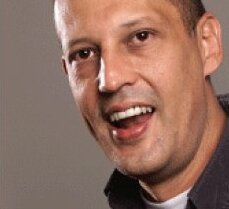
Javier Álvarez Fuentes was a Mexican composer known for compositions that combined a variety of international musical styles and traditions, and that often utilized unusual instruments and new music technologies. Many of his works combine music technology with diverse instruments and influences from around the world. He taught internationally, in the UK and Sweden, and back in Mexico later in his career.
Adina Izarra is a Venezuelan musician, music educator and composer.
Marc Battier is a French composer and musicologist.

Vox Cycle is a six composition or independent movement cycle for four amplified voices, and electroacoustic music by Trevor Wishart, composed between 1980 and 1988, associated with extended vocal techniques and the contemporary vocal composition.

PUNTO Experimental Music Ensemble is a contemporary music group active in Miami, Florida, United States.
Julio Roloff is a Cuban composer that has collaborated with the Laboratorio Nacional de Música Electroacústica (LNME) founded by composer Juan Blanco, where he created numerous electroacoustic pieces.
The Hexagonal Galleries is an hour-long work by Cuban composer Armando Rodriguez Ruidiaz.
Guillermo Galindo is a Mexican composer, performer, and artist.
